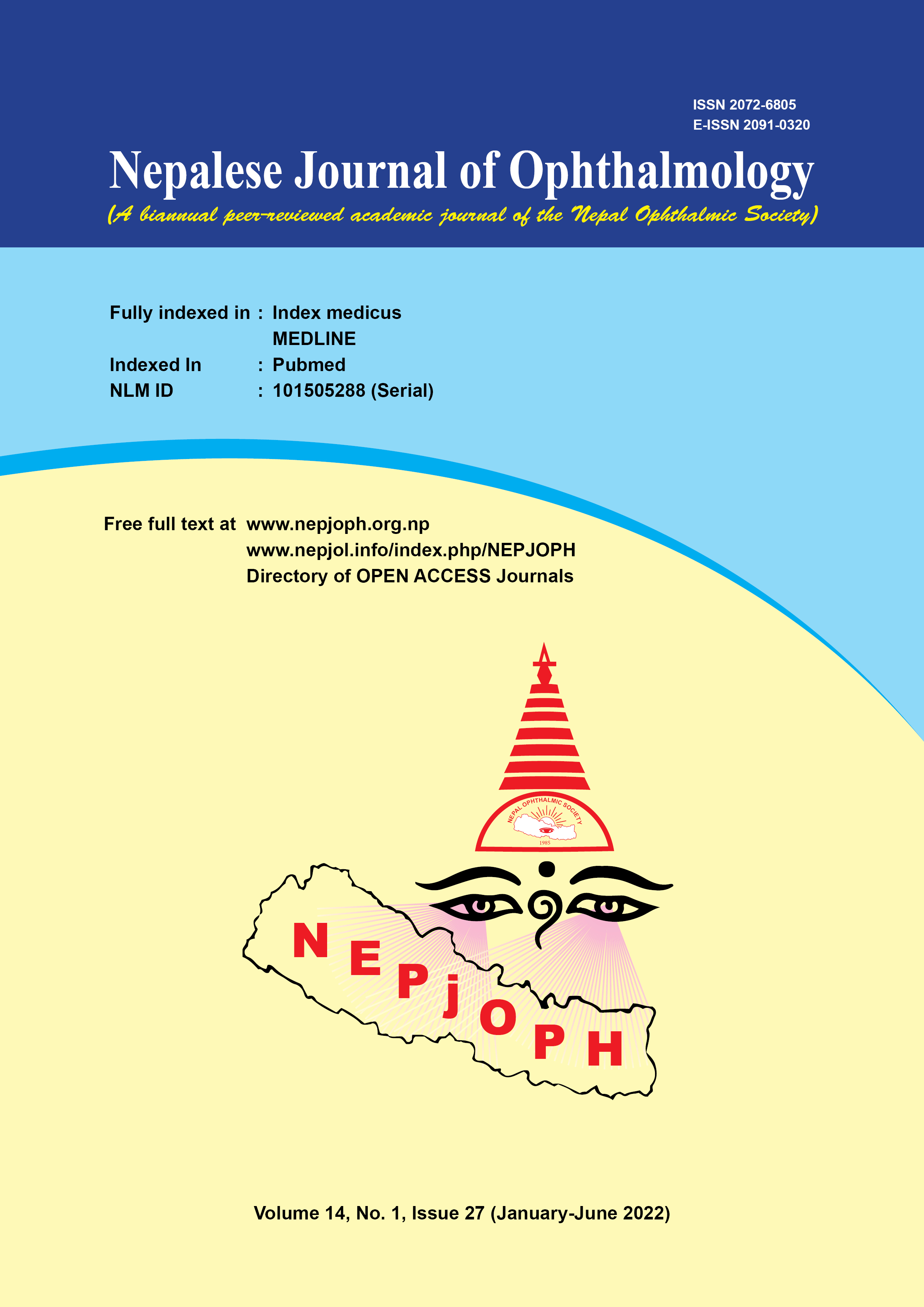Corneal Perforation Secondary to Rosacea Keratitis Managed with Excellent Visual Outcome
DOI:
https://doi.org/10.3126/nepjoph.v14i1.36454Keywords:
Bandage contact lens, Cyanoacrylate glue, Ocular rosaceaAbstract
Introduction: Ocular Rosacea is a poly etiological chronic inflammatory disease with heterogeneous clinical manifestations. It is primarily a dermatologic disease, which often manifests in the eyes affecting eyelids, conjunctiva, and cornea. The leading role in the pathological process belongs to the disruption of regulatory mechanisms in the vascular, immune, and nervous systems. The varied manifestation can be erythematous pustular lesions on the face, chronic blepharitis, meibomian gland dysfunction, evaporative dry eye, peripheral corneal ulceration, corneal scarring, perforation, and neovascularization.
Case: We describe a rare case report of a 43-year-old male with progressive ocular manifestations of rosacea keratitis. Slit-lamp biomicroscopic examination revealed squamous blepharitis, telangiectatic vessels with obliterated meibomian glands, circumcorneal congestion, peripheral corneal perforation of 2x2 mm at 4 0 clock, shallow anterior chamber(AC) with positive seidel’s in the left eye. Fundoscopy showed serous choroidal detachment(CD). Snellen’s Best Corrected Visual Acuity(BCVA) was 20/240 with Intraocular pressure measured was 5 mmhg. The patient was managed with topical loteprednol, moxifloxacin, carboxymethylcellulose medications along with cyanoacrylate glue and bandage contact lens and had excellent visual acuity of 20/20 with a follow-up of 1 year.
Conclusion: Ocular rosacea perforation has been reported in chronic cases and may not always require amniotic membrane transplant, patch grafting, or keratoplasty. If managed meticulously with cyanoacrylate glue and BCL can have excellent outcomes. Eye specialists should be alerted that the key to a successful outcome is excellent control of inflammatory activity and differentiating this non-infectious keratitis from other keratitis before commencing treatment.
Downloads
Downloads
Published
How to Cite
Issue
Section
License
Copyright (c) 2022 Nepalese Journal of Ophthalmology

This work is licensed under a Creative Commons Attribution-NonCommercial-NoDerivatives 4.0 International License.
This license enables reusers to copy and distribute the material in any medium or format in unadapted form only, for noncommercial purposes only, and only so long as attribution is given to the creator.




